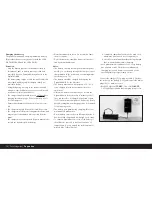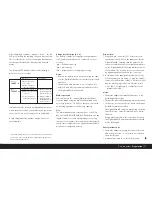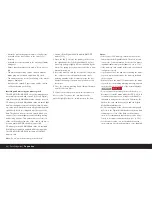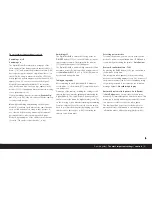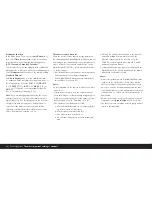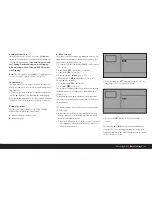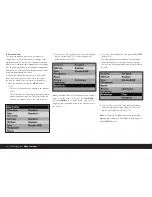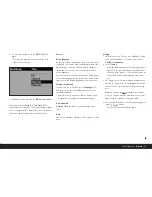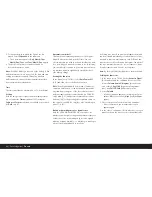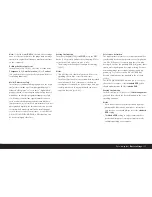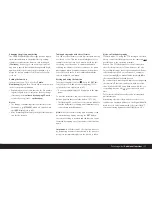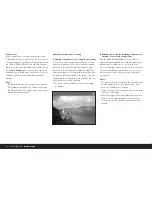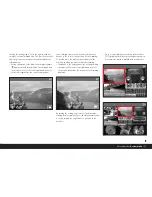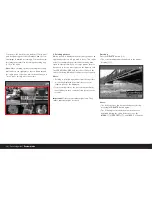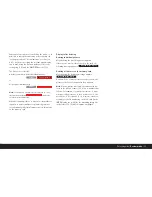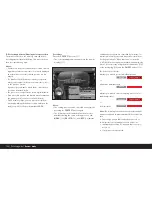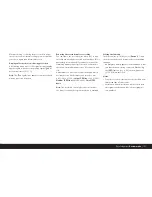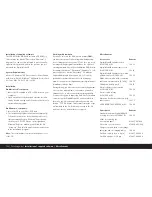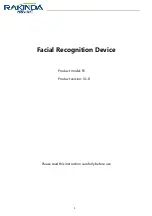
92 / Detailed guide /
Basic settings
ISO sensitivity
In traditional photography, the choice of ISO value
reflects the light sensitivity of the film used. More sen-
sitive films allow faster shutter speeds and/or smaller
apertures and vice versa, at the same brightness.
The ISO setting on the LEICA DIGITAL-MODUL-R also
allows the shutter speed/aperture values to be adjust-
ed manually in five steps to meet specific require-
ments.
The optimum picture quality is obtained at
ISO 100
,
the lowest of the possible settings. The higher sensi-
tivities
ISO 200
,
ISO 400
,
ISO 800
and the addi-
tional increase possible with the final option using the
ISO PUSH
function (see below) result in increasing
“image noise”. This effect can be compared to the
“graining” that occurs with highly sensitive films.
Setting the function
Turn the setting dial (1.22) to
ISO
, keep the
SET
but-
ton (1.23) pressed, and use the setting ring (1.13) to
select the desired sensitivity (see also p. 85).
• The display in the data panel changes accordingly
(2.2.3a/b/c/d).
If you require a further increase in sensitivity beyond
ISO 800
(i.e. if a faster shutter speed is more impor-
tant than the increased image noise), due to very poor
lighting conditions for example, the
ISO PUSH
func-
tion provides you with the additional ISO 1600 sensitiv-
ity level.
Note:
ISO PUSH
is only available if the setting has
previously been released in the menu.
In the menu (see p. 70/86), select
ISO Push
(3.5)
and then choose the desired function in the correspon-
ding submenu.
Image properties/Sharpness, color
saturation, and contrast
One of the many advantages of electronic photography
over traditional photography is that it is very easy to
change critical properties of a picture, i.e. those that
determine its character. While photographic software -
after recording and transfer to a computer - provides
great scope for doing this, the LEICA DIGITAL-MODUL-R
allows you to influence three of the most important
image properties even before taking the picture:
• Sharp reproduction – at least of the main subject –
using the correct distance setting is a prerequisite
for a successfully picture. In turn, the impression of
sharpness of a picture is to a great extent deter-
mined by the sharpness of the edges, i.e. by how
small the transition area between light and dark is at
the edges in the picture. The impression of sharp-
ness can thus be changed by enlarging or reducing
these areas.
• The color saturation determines whether the colors
in the picture tend to appear as “pale” and pastel-like
or “bright” and colorful. While the lighting and weath-
er conditions (hazy/clear) are given as conditions for
the picture, there is definite scope for influencing the
reproduction here.
• The contrast, i.e. the difference between light and
dark sections of the image, determines whether an
image has a more “flat” or “brilliant” effect. As a con-
sequence, the contrast can be influenced by increas-
ing or reducing this difference, i.e. by lighter repro-
duction of light sections of the image and darker
reproduction of dark sections.
For all three image properties – independently of one
another – as well as the
Standard
setting, i.e.
unchanged reproduction, you can select a weaker
Low
or stronger
High
option. In the case of
Color Satura-
tion
,
Black+White
reproduction can also be selected
as a fourth option.

